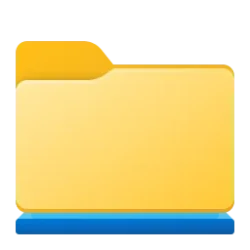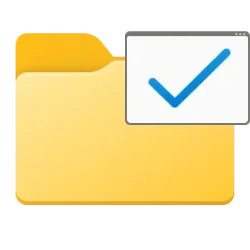This tutorial will show you how to hide or unhide files and folders in Windows 10 and Windows 11.
Hidden files, folders, and drives do not show by default in Windows.
Hidden files, folders, and drives are marked with the hidden attribute.
Protected operating system files are marked with the hidden and system attributes.
When you Show hidden files, folders, and drives, their icons will appear dimmed (faded) in File Explorer to indicate they are hidden items.
When you Don't show hidden files, folders, or drives, hidden items will now appear in File Explorer.
- Option One: Hide and Unhide File(s) in Properties
- Option Two: Hide and Unhide Folder(s) in Properties
- Option Three: Hide and Unhide File using Command
- Option Four: Hide and Unhide Folder using Command
1 Select one or more files you want to hide or unhide.
2 Right click or press and hold on the selected file(s), and click/tap on Properties. (see screenshot below)
3 In the General tab, check (hide) or uncheck (unhide) the Hidden attribute for what you want, and click/tap on OK. (see screenshot below)
1 Select one or more folders you want to hide or unhide.
2 Right click or press and hold on the selected folder(s), and click/tap on Properties. (see screenshot below)
3 In the General tab, check (hide) or uncheck (unhide) the Hidden attribute for what you want, and click/tap on OK. (see screenshot below)
4 If a selected folder has contents, select (dot) to either Apply changes to this folder only or Apply changes to this folder, subfolders and files for what you want, and click/tap on OK. (see screenshotd below)
1 Open Windows Terminal or Windows Terminal (Admin) based on the access permissions you have for the file, and select either Windows PowerShell or Command Prompt.
2 Type the command below you want to use into the command prompt, and press Enter. (see screenshots below)
attrib +h "full path of file"attrib -s -h "full path of file"Substitute full path of file in the command above with the actual full path of the file with extension you want to hide or unhide.
For example:
attrib +h "C:\Users\Brink\Desktop\file.txt"
attrib -s -h "C:\Users\Brink\Desktop\file.txt"
1 Open Windows Terminal or Windows Terminal (Admin) based on the access permissions you have for the folder, and select either Windows PowerShell or Command Prompt.
2 Type the command below you want to use into the command prompt, and press Enter. (see screenshots below)
attrib +h "full path of folder"attrib -s -h "full path of folder"Substitute full path of file in the command above with the actual full path of the folder you want to hide or unhide.
For example:
attrib +h "C:\Users\Brink\Desktop\folder"
attrib -s -h "C:\Users\Brink\Desktop\folder"
attrib +h "full path of folder" | attrib +h "full path of folder\*" /s /dattrib -s -h "full path of folder" | attrib -s -h "full path of folder\*" /s /dSubstitute full path of folder in the command above with the actual full path of the folder you want to hide or unhide.
For example:
attrib +h "C:\Users\Brink\Desktop\Folder" | attrib +h "C:\Users\Brink\Desktop\Folder\*" /s /d
attrib -s -h "C:\Users\Brink\Desktop\Folder" | attrib -s -h "C:\Users\Brink\Desktop\Folder\*" /s /d
That's it,
Shawn Brink












